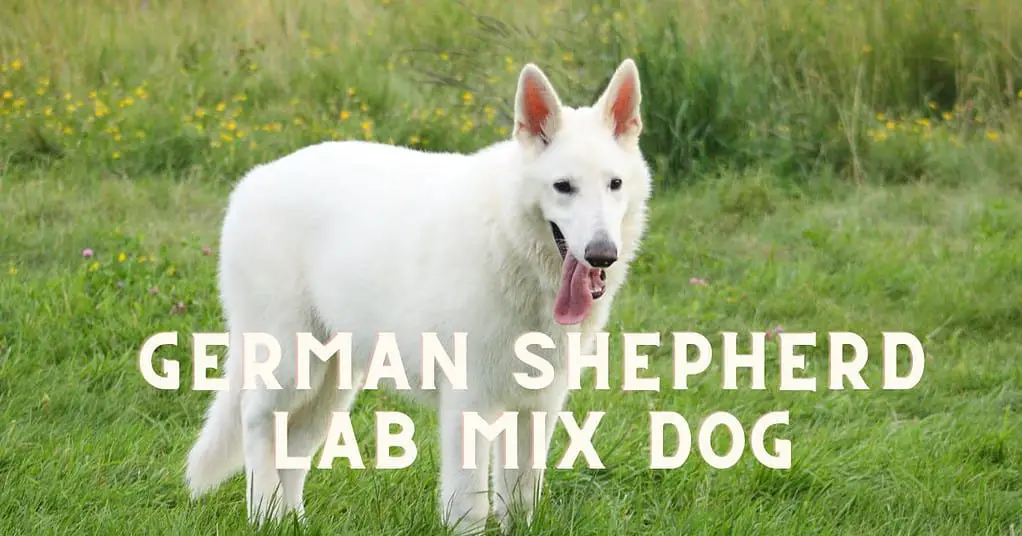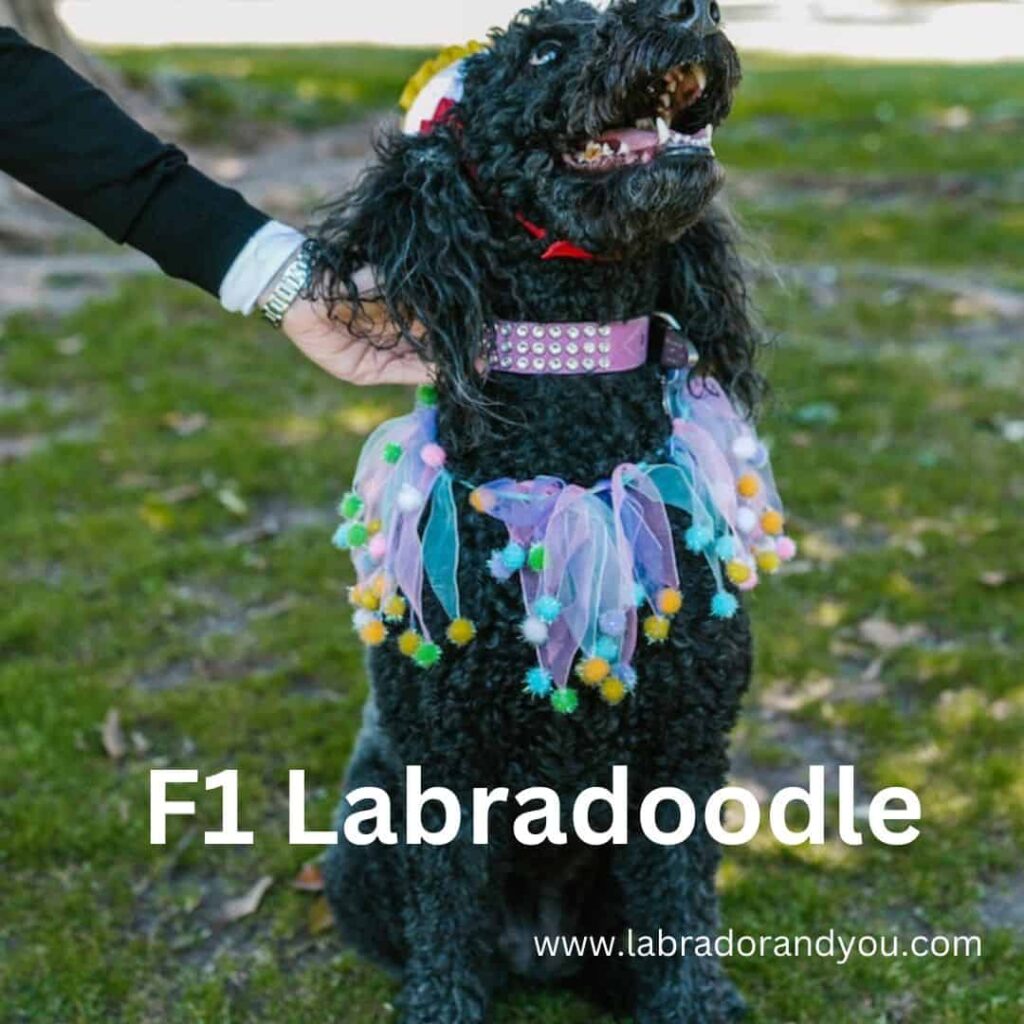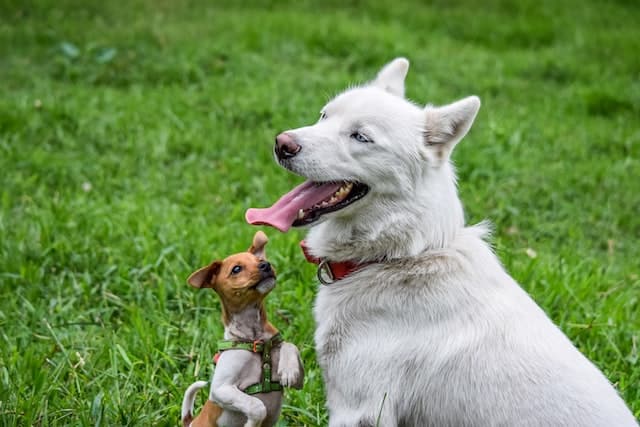A black lab German shepherd mix is a crossbreed dog that combines the traits of a black Labrador Retriever and a German Shepherd. It typically has a medium to large build, short black fur, floppy ears, and a loyal, intelligent temperament. This mixed breed can make a great family dog that is energetic, affectionate, and easy to train.
If you’re intrigued by this intelligent, energetic mixture that effortlessly doubles as an endearing family pet and responsible guard dog, then strap in for this comprehensive discussion about everything you need to know about owning a Sheprador.
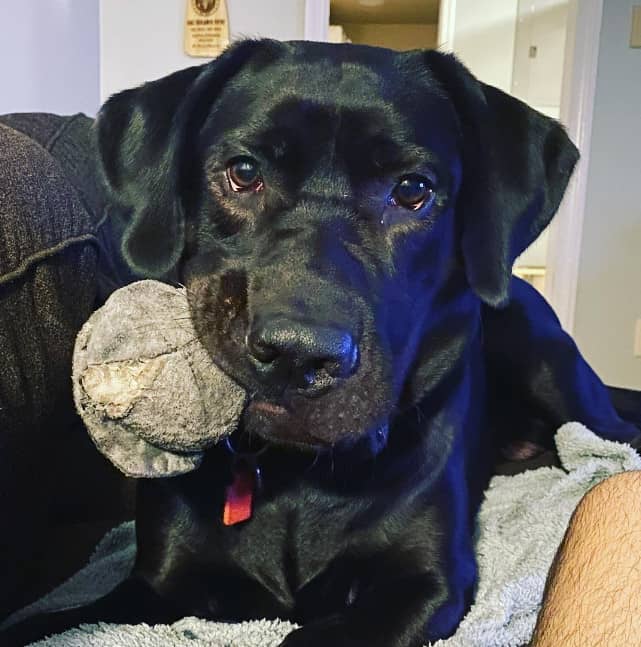
Decoding The Breeds: Black Labrador And German Shepherd
The Black Labrador is a versatile and friendly breed that excels in various activities, including retrieving, hunting, and therapy work.
Black Labrador Popular Breed: An Overview
Originating from Newfoundland, Canada, the Black Labrador has historically been a fisherman’s companion. The breed was trained to catch escaped fish and haul in nets—a job requiring agility, strength and stamina.
In contemporary times, however, Black Labradors have transitioned from waterfront workers to beloved family pets due to their friendly temperament and impressive intelligence levels.
Black Labs are renowned for their sleek, water-resistant coats and expressive eyes, which range from hazel to brown. This is accompanied by an utter loyalty towards their owners – keeping up with the best traits inherited over generations.
German Shepherd: A Brief Insight
The German Shepherd, often recognized as a symbol of courage and diligence, is an extremely versatile breed. It originated in Germany and was initially developed for herding sheep and protecting farms. Known for their intense loyalty and protective instincts towards their human family members, German Shepherds stand tall among America’s most popular dog breeds.
They are medium to large-sized dogs with pointed ears that command attention. Sporting strong double coats that tend to shed heavily at times necessitates regular grooming sessions.
Despite wearing an aloof personality around strangers due to high inheritance from their ancestral guarding traits, they exhibit sheer affection within the circle of familiar faces, including children and other pets.
The Unique Blend: Black Lab German Shepherd Mix
The unique blend of a Black Lab German Shepherd mix, also known as the Sheprador, combines both parent breeds’ intelligence and hardworking nature.
The History Of The Sheprador
The roots of the Sheprador, or German Shepherd Lab Mix, place it firmly in twentieth-century America’s cultural melting pot. The exact origin date is unknown, but this unique crossbreed began appearing sometime in the last 30 years as people started appreciating and seeking out mixed-breed dogs more frequently.
Bred from two of the most popular and admired canine breeds globally – the intelligent and diligent German Shepherd and the friendly and energetic Labrador Retriever – a Sheprador carries a rich genetic heritage from its distinguished parents.
Breeders sought to blend these two purebreds’ desirable traits into one versatile dog suitable for various roles ranging from service work to be a cherished family pet.

The Typical Nature Of The Sheprador
The Sheprador is known for its friendly and loyal nature, making it an excellent family companion. This mix breed inherits the intelligence and trainability of the German Shepherd and the Labrador Retriever. Due to their protective instincts inherited from their German Shepherd parent, Shepradors tend to be cautious around strangers.
However, with proper socialization from an early age, they can become well-adjusted dogs that interact comfortably with new people.
Shepradors have high energy levels and require lots of exercises to keep them happy and healthy. Their activity needs can be met through daily walks or jogs, playtime in a secure yard, or engaging in interactive games that challenge their minds.
While they enjoy exploring their surroundings outdoors, Shepradors also crave companionship from their human family members. Regular grooming is essential for this mix breed because their double coat sheds moderately throughout the year. Weekly brushing helps control shedding while keeping their coat clean and free from tangles or matting.
The Physical Appearance Of The Sheprador
The Sheprador, also known as the Labrashepherd or Black Lab German Shepherd Mix, is a medium to large-sized dog with a strong and muscular build. It is about 22 to 26 inches tall and weighs 55 to 80 pounds.
One notable physical characteristic of the Sheprador is its coat, which can vary in length and texture depending on the traits inherited from its parents. It can have a short, dense coat like the Labrador Retriever or a double coat like the German Shepherd.
The Sheprador often inherits traits from both parent breeds regarding facial features. They have almond-shaped eyes that are expressive and intelligent-looking.
The Temperament Of The Sheprador
The Sheprador, or German Shepherd Lab Mix, is known for its friendly and loyal temperament. These dogs are incredibly affectionate towards their human family members and love being around people. They form strong bonds with their owners and enjoy spending quality time with them.
Due to their German Shepherd heritage, Shepradors can be cautious around strangers. They have a natural protective instinct which makes them excellent guard dogs. When it comes to children and other pets, Shepradors generally get along well. They are patient and gentle when interacting with kids and can make great playmates.
Overall, the temperament of a Sheprador combines the loyalty of a German Shepherd with the friendliness of a Labrador Retriever. They are highly trainable due to their intelligence and eagerness to please their owners but may sometimes display some stubbornness.
Caring For Your German Shepherd Lab Mix
To properly care for your Sheprador, provide plenty of exercise to keep them mentally and physically stimulated.
Exercise Requirements
Shepradors have high energy levels and require regular exercise to stay happy and healthy. Here are some key points to consider when it comes to meeting their exercise needs:
- Shepradors need at least 60 minutes of physical exercise per day.
- Engage in activities challenging their physical abilities, such as running, jogging, or playing fetch.
- Mental stimulation is equally important for Shepradors. Consider puzzle toys or training sessions to keep their minds sharp.
- Dog parks provide off-leash play and socialization opportunities with other dogs.
- Hiking or exploring nature trails can be a great way to stimulate both their mind and body.
- Avoid leaving them alone for extended periods as they may become bored and restless, leading to destructive behavior.
- Mix up their exercise routine to prevent boredom. Introduce new activities or rotate between different forms of exercise throughout the week.
- Remember that young Sheprador puppies may have more limited exercise capabilities due to their growing bones and joints. Consult with a veterinarian for appropriate exercise guidelines.

Dietary Requirements of German Shepherd Lab
Feeding your Sheprador a balanced diet is essential for their health and well-being. Here are some key points to consider when it comes to their dietary requirements:
- High-Quality Protein: A high-quality protein source should be the foundation of your Sheprador’s diet. Look for dog food that contains real meat as the primary ingredient, such as chicken or beef.
- Healthy Fats: Fats are an important part of your Sheprador’s diet and help support their energy levels and coat health. Look for dog food that includes healthy sources of fats, like fish oil or flaxseed oil.
- Limited Carbohydrates: While carbohydrates can provide energy, it’s important to choose dog food with limited carbohydrates and focusing more on protein and fats. This helps prevent excessive weight gain and balances your Sheprador’s energy levels.
- Nutrient-Rich Ingredients: Make sure the dog food you choose contains a variety of fruits, vegetables, and other nutrient-rich ingredients. These provide essential vitamins, minerals, and antioxidants that support your Sheprador’s overall health.
- Portion Control: It’s important to feed your Sheprador the appropriate portion size based on their age, size, activity level, and metabolic rate. Overfeeding can lead to obesity, so be mindful of how much you feed them.
- Fresh Water Access: Ensure that your Sheprador always has access to clean water throughout the day.
- Regular Feeding Schedule: Establish a consistent feeding schedule for your Sheprador to help maintain their digestive health and prevent grazing behavior.
- Avoid Harmful Foods: Some human foods can be toxic to dogs, so avoid feeding your Sheprador foods like chocolate, onions, grapes/raisins, avocados, and anything containing xylitol.
- Special Dietary Needs: If your Sheprador has specific dietary needs or health conditions, consult your veterinarian for the best food options.
Remember, each Sheprador is unique, so finding the perfect diet that suits your dog’s needs may take trial and error.
Grooming Needs
Grooming is an essential part of caring for your German Shepherd Lab Mix. Here are the grooming needs you should keep in mind:
- Regular brushing: Lab German Shepherd mixes have a double coat that sheds a lot, especially during seasonal changes. Regular brushing will help to reduce shedding and keep their coat healthy.
- Nail trimming: Trim your Sheprador’s nails regularly to prevent them from growing too long and causing discomfort or issues with walking.
- Ear cleaning: Lab German Shepherd mixes are prone to ear infections due to their floppy or pointed ears. Gently clean their ears regularly to remove dirt and prevent infection.
- Teeth cleaning: Dental hygiene is important for dogs of all breeds. Brush your Sheprador’s teeth regularly to maintain good oral health and prevent dental problems.
Health Considerations For German Shepherd Lab Mix.
Shepradors can be prone to certain health issues commonly seen in Labrador Retrievers and German Shepherds, such as hip dysplasia, elbow dysplasia, and progressive retinal atrophy (PRA). They may also be susceptible to other breed-specific conditions like bloat and allergies.
Common Labrador Health Issues
Labrador Retrievers, including the Sheprador mix, are generally healthy dogs. However, they may be prone to certain health issues. Here are some common health problems that Labradors can experience:
- Obesity: Labradors are prone to weight gain, leading to various health problems such as joint issues and diabetes. It is important to monitor their diet carefully and ensure they receive regular exercise.
- Hip and Elbow Dysplasia: This is a genetic condition where the hip or elbow joints do not develop properly, leading to pain and mobility issues. Regular vet check-ups and appropriate exercise can help manage this condition.
- Eye Diseases: Labrador Retrievers are predisposed to certain eye conditions such as progressive retinal atrophy (PRA) and cataracts. Regular eye examinations by a veterinarian are crucial for early detection and treatment.
- Ear Infections: Labradors have floppy ears that can trap moisture, making them more susceptible to ear infections. Regular cleaning and proper drying of the ears can help prevent this common issue.
- Skin Allergies: Some Labradors may suffer from allergies that cause itching, redness, and skin infections. Identifying the triggers and providing appropriate medical treatment under veterinary guidance is essential.
- Exercise-Induced Collapse (EIC): A small percentage of Labradors may have EIC, which causes muscle weakness or collapse during intense exercise or excitement. Careful management of their physical activities is necessary to prevent episodes.
- Gastric Dilatation Volvulus (GDV): Also known as bloat, this condition occurs when the stomach twists on itself, causing gas buildup or torsion in large-breed dogs like Labradors. Immediate veterinary intervention is required in such emergencies.
Common German Shepherd Health Issues
German Shepherds are prone to several health issues that potential owners should know. These include:
- Hip Dysplasia is common in large-breed dogs, including German Shepherds. It occurs when the hip joint does not develop properly, leading to instability and eventually arthritis.
- Elbow Dysplasia: Similar to hip dysplasia, elbow dysplasia affects the elbow joints of German Shepherds. It can cause pain, lameness, and difficulty with movement.
- Progressive Retinal Atrophy (PRA): PRA is a degenerative eye disorder that affects the photoreceptor cells in the retina. It can lead to gradually worsening vision loss in German Shepherds.
- Degenerative Myelopathy (DM): DM is a progressive neurological disorder affecting German Shepherds’ spinal cord. It leads to hind limb weakness and, eventually, paralysis.
- Exocrine Pancreatic Insufficiency (EPI): EPI is a condition where the pancreas fails to produce enough digestive enzymes. This can result in poor digestion and malnutrition.
- Bloat: Also known as gastric dilatation-volvulus (GDV), bloat is a life-threatening condition commonly affecting deep-chested breeds like German Shepherds. It occurs when the stomach fills with gas or fluid and twists upon itself.
- Perianal Fistulas: This condition causes painful ulcers and inflammation around the anus of German Shepherds. An abnormal immune response or bacterial infection may cause it.
- Allergies: German Shepherds are prone to allergies, including food and environmental allergies, which can cause itching, skin irritation, and other symptoms.
Life Expectancy Of The German Shepherd Lab Mix
The life expectancy of a Sheprador, or black Lab German Shepherd mix, typically falls between 10 and 12 years. This lifespan is similar to its lab parent breeds, the Labrador Retriever and the German Shepherd.
Proper nutrition is essential to ensure your Sheprador lives a long and healthy life. Feeding them high-quality dog food with natural ingredients will provide the nutrients for their overall well-being.
Hip dysplasia, elbow dysplasia, progressive retinal atrophy (PRA), Von Willebrand’s disease (vWD), hypothyroidism, cataracts, and hemophilia are some conditions they may inherit from their parents.
Training And Socialization Of German Shepherd Lab Mix
Training and socializing a Sheprador is essential to develop good behavior, obedience, and positive interactions with humans and other animals.
The Trainability Of The Sheprador
The Sheprador, a mix between a German Shepherd and Labrador Retriever, is known for its high level of trainability. This intelligent breed responds well to consistent, positive reinforcement training methods. They inherently desire to please their owners, making them eager learners.
One key factor in training your Sheprador is starting early and crate training. From puppyhood, establish clear boundaries and rules that are reinforced consistently. Furthermore, mental stimulation is essential for the Sheprador’s overall well-being.
Overall, the trainability of the Sheprador offers endless opportunities for bonding and shared activities while shaping them into well-behaved family pets through positive training methods tailored to their individual personality traits.
The Importance Of Socialization
Socialization is a crucial aspect of raising a well-rounded and balanced Sheprador. It involves exposing the dog to different people, animals, noises, and environments from an early age. Proper socialization ensures that your Sheprador becomes comfortable in various situations and maintains a friendly demeanor towards both humans and animals.
One way to facilitate socialization is by regularly organizing playdates with other dogs or introducing your Sheprador to different people. Gradually expose them to new experiences such as car rides, visiting crowded places like pet stores or cafes.
Remember that socialization is not just for puppies; it’s an ongoing process throughout their lives. So make sure you prioritize socializing your Sheprador from day one – it’s an investment that will pay off in spades!

The German Shepherd Lab Mix As A Family Pet
The Sheprador is an excellent choice for a family pet, as they are friendly and get along well with children and other pets. Their loyal nature and protective instincts make them great companions, ensuring your family’s safety.
Interaction With Children And Other Pets
The Sheprador, or German Shepherd Lab Mix, is generally known to be great with children and other pets. Due to their friendly and sociable nature, they often form strong bonds with kids and can become excellent playmates.
Regarding other pets in the household, the Sheprador tends to get along well with them too. However, it’s important to note that each dog is unique and may react differently when first introduced to new animals.
For example, gradually introducing your Sheprador puppy to your existing cat or dog through supervised interactions can help prevent territorial behavior or aggression. Remember that no matter how well-behaved your Sheprador is around children and other pets; supervision should always be maintained during playtime or any interaction until you are confident about their compatibility.
Overall, whether playing fetch with kids at the park or snuggling with another pet on the floor at home, the Sheprador’s affectionate nature makes them an ideal companion for families looking for a loving four-legged addition.
The Sheprador In An Apartment Setting
Living in an apartment doesn’t mean you can’t enjoy the company of a Sheprador. While these dogs are known for their high energy levels, they can adapt well to apartment living as long as their exercise and mental stimulation needs are met. The key is ensuring that they get enough physical activity daily.
In addition to physical exercise, provide them with mental stimulation to prevent boredom and destructive behavior. Obedience training, agility work, and scent detection activities are excellent ways to engage their minds and keep them mentally sharp.
One advantage of having a Sheprador in an apartment is their size. They fall into the mid to large category, weighing between 55 to 80 pounds and standing between 22 and 26 inches tall.
While your Sheprador’s well-being must receive regular exercise and mental stimulation outside the apartment setting, proper care, attention, and ample playtime indoors and outdoor routines will also ensure they thrive within this living arrangement.
Purchasing And Adoption
Considerations when purchasing or adopting a Sheprador include understanding the costs associated with owning one, such as initial purchase price, grooming expenses, veterinary care, and potential training costs.
Costs Of Owning A Sheprador
When purchasing a Sheprador from a responsible breeder, the price can range anywhere from $500 to $1,500 or more, depending on factors such as lineage and location. Monthly expenses for high-quality dog food specifically formulated for large breeds can increase over time. When considering the overall expenses of owning a German Shepherd Lab mix beyond the initial purchase price, factor in ongoing costs such as
- Dry DOG food and treats,
- Veterinary care, including vaccines, and annual check-ups( $300-$600 per year),
- Grooming supplies (around $100 per year),
- Toys and accessories ($100+ annually),
- Training classes (ranging from $200-$500),
- Pet insurance (around $400 annually) etc.
Health risks specific to this breed cross, like common Labrador health issues, include hip dysplasia ($2k-5k+ for treatment) & common GSD health issues include bloat ($1k-10k).
Adopting A Sheprador
Adopting a Sheprador can be a fantastic option for those looking to add a loving and energetic companion to their family. When considering adoption, looking for reputable shelters or rescue organizations specializing in mixed-breed pups is important.
By adopting a Sheprador, you are giving a second chance at life to an animal in need. Due to their diverse genetic makeup, designer breeds like Shepradors tend to be healthier than purebred dogs.
Ultimately, by choosing adoption over purchasing from breeders or pet stores, you provide love and care for one special dog and contribute positively towards reducing the number of animals needing homes in shelters nationwide.
| Rescue Organization | Location | Focus |
|---|---|---|
| German Shepherd Rescue & Adoptions (GSRA) | North Carolina | German Shepherds and mixes |
| Labrador Retriever Rescue of Florida (LRRoF) | Florida | Labradors and Lab mixes |
| Westside German Shepherd Rescue of Los Angeles | Los Angeles | German Shepherds and mixes |
| Lucky Lab Rescue and Adoption | Texas, Indiana, Maine | Labradors and Lab mixes |
| German Shepherd Rescue of Northern California | Northern California | German Shepherds and mixes |
| All Shepherd Rescue | Baltimore | German Shepherds and Shepherd mixes |
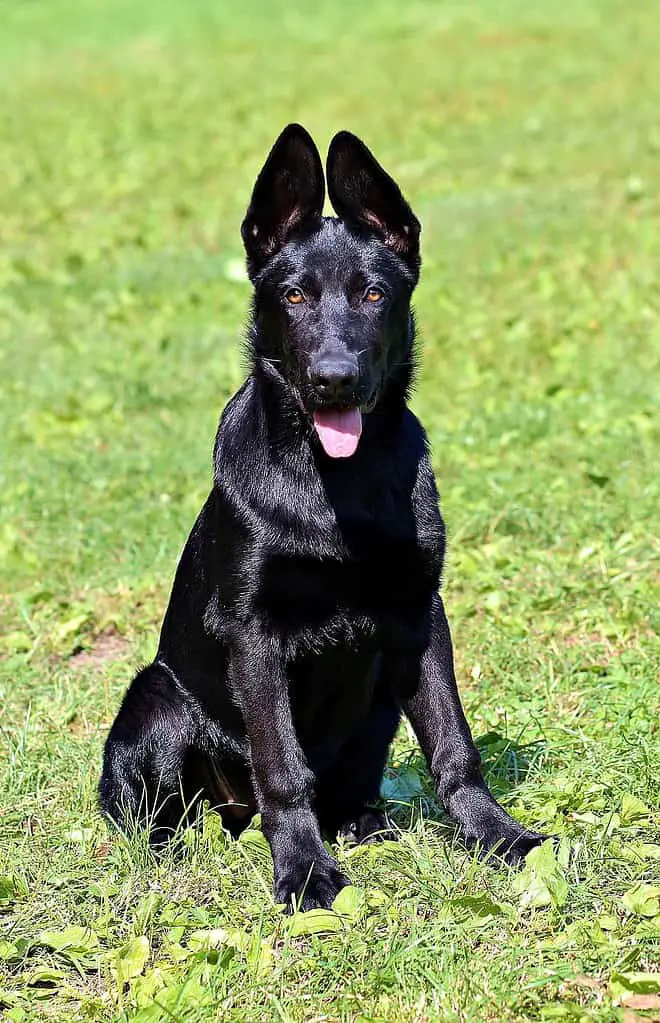
The Pros And Cons Of Owning A Sheprador
Owning a Sheprador comes with its own unique advantages and disadvantages, which are essential for potential owners to consider before committing.
| Pros | Cons |
|---|---|
| Shepradors are intelligent and highly trainable | They may need time to adjust to other dogs. |
| They are known for their loyalty and friendliness | Their high energy levels require daily exercise and mental stimulation, which can be demanding for some owners. |
| Being good with children and other pets makes them ideal as family dogs. | They are known for their loyalty and friendliness. |
| They inherit the best traits from the German Shepherd and Labrador Retriever breeds. | Regular grooming, including brushing and occasional visits to a professional groomer, is necessary due to their thick black coat. |
FAQs
How Big Will A German Shepherd Lab Mix Get?
German Shepherd Lab mixes are generally medium to large-sized dogs, standing about 22 to 26 inches tall and weighing between 55 to 80 pounds.
They can grow to be quite substantial in size, with some individuals reaching weights of up to 88 pounds. It’s important to note that the exact size of a German Shepherd Lab mix may vary depending on factors such as genetics and individual development.
How Much Is A German Shepherd Lab Mix?
The cost of a German Shepherd Lab mix, also known as a Sheprador or Labrashepherd, can vary depending on several factors. On average, you can expect to pay anywhere from $500 to $1,500 for a puppy from a reputable breeder.
It’s important to note that while purchasing a dog from a breeder may be more expensive upfront, it ensures you get a healthy and well-cared-for puppy with proper documentation.
Are German Shepherd Lab Mix Good Dogs?
German Shepherd Lab mixes, or Shepradors or Labrashepherds, can make excellent companions and family pets. These dogs are known for their loyalty, intelligence, and friendly nature.
They have a natural protective instinct inherited from the German Shepherd side of their heritage, making them great guard dogs. Their mixed ancestry also gives them the pleasing nature of the Labrador Retriever, making them highly trainable.
German Shepherd Lab mixes are especially good with children and enjoy being part of an active family. They thrive on companionship and love spending time with their human family members. These dogs have high energy levels and require ample exercise to stimulate their bodies and minds.
How Long Do German Shepherd Lab Mixes Live?
The average lifespan of a German Shepherd Lab mix, also known as a Sheprador, is between 10 and 14 years. This breed combination inherits the longevity genes from both parent breeds – the German Shepherd and the Labrador Retriever.
While individual dogs may vary depending on genetics and overall health, providing them with proper care and nutrition can significantly impact their lifespan. Regular exercise, a balanced diet, routine veterinary check-ups, and early identification of potential health issues are essential for ensuring your Sheprador lives long and healthy.
Author Profile
- Site Owner And Dog Lover
-
Aritra, the founder of Labradorandyou.com, is a lifelong dog lover whose passion ignited for Labradors for their loyalty and intelligence. With extensive research and personal experiences, Aritra has become a Labrador expert, offering a rich resource on the breed. Labradorandyou.com provides reliable, timely, and evidence-based information, including Labrador-specific product reviews, training techniques, and care tips.
Labradorandyou.com was born out of Aritra's passion and his desire to share his profound knowledge about the breed. The site serves as a comprehensive resource, offering a wealth of up-to-date information for Labrador owners and enthusiasts alike
Also by the author
-
 Lab-TypesNovember 17, 2023Old Dog Seizures: Causes, Symptoms, and Treatment Options
Lab-TypesNovember 17, 2023Old Dog Seizures: Causes, Symptoms, and Treatment Options
-
 Lab-TypesNovember 17, 2023Why Is My Dogs Poop Yellow? 8 Reasons & Solutions
Lab-TypesNovember 17, 2023Why Is My Dogs Poop Yellow? 8 Reasons & Solutions
-
 ReviewsNovember 17, 2023The Only Hill’s Science Diet Review You Need To Read
ReviewsNovember 17, 2023The Only Hill’s Science Diet Review You Need To Read
-
 Lab-TypesNovember 17, 2023How To Adopt An Emotional Support Dog?
Lab-TypesNovember 17, 2023How To Adopt An Emotional Support Dog?
